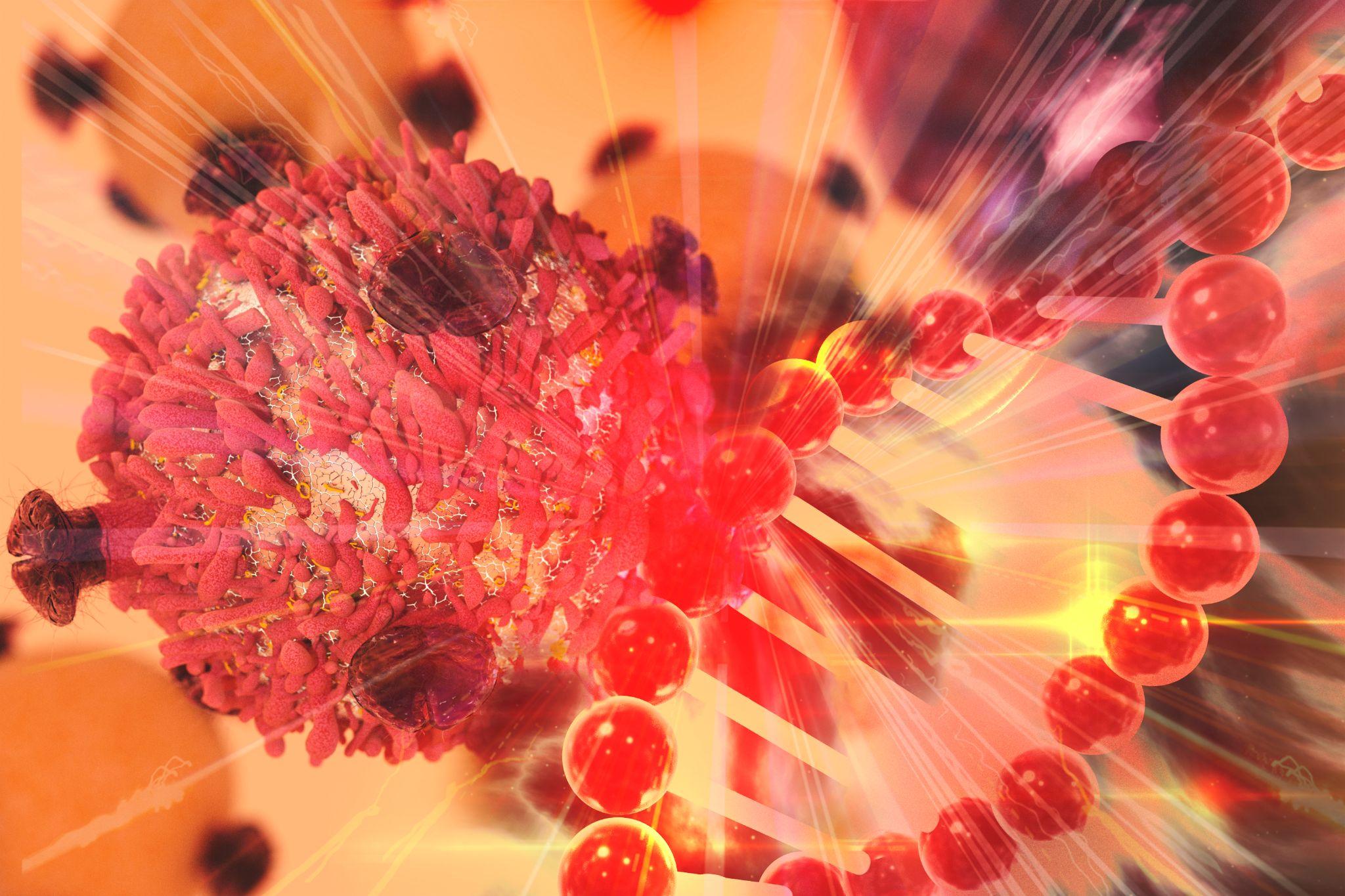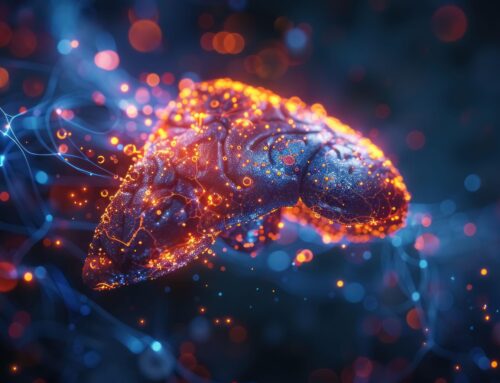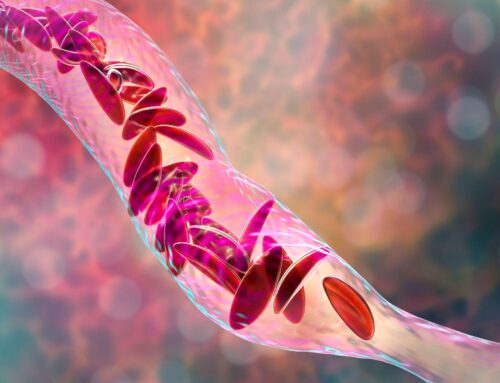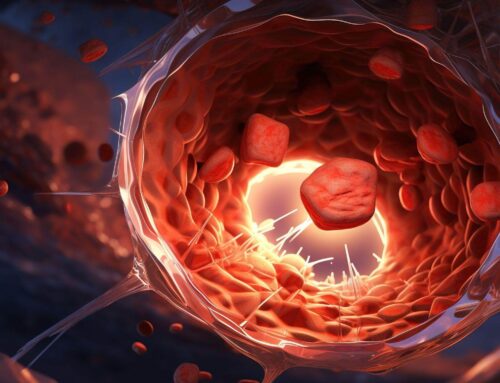Looking for something?
Base Editing in Clinical Trials to Treat Acute Lymphoblastic Leukemia

Base editing has experienced a rapid rise in use since it first came on the scene in 2016, with multiple trials underway, testing its ability to treat conditions with precise, single-letter changes to DNA. The technique presents a potentially more accurate and safer method compared to nuclease-based approaches; however, it’s not without its risks. Currently, researchers are investigating how base editing can be used to treat an aggressive form of leukemia, which leaves its victims with a long-term survival rate of less than 15%.
Two separate research teams — one headed by Waseem Qasim and a team at University College London and the other led by Beam Therapeutics — are studying ways to improve chimeric antigen receptor (CAR) T-cell therapy. The current method, which is already used for treating various cancers, requires removing a sample of a person’s T-cells, engineering them to produce cancer-targeting proteins called chimeric antigen receptors (CARs), and then reinfusing the cells into the body (1). While the therapy in its current form has successfully treated some forms of leukemia, the rare T-cell type of cancer leaves patients — often children — with advanced disease while lacking enough healthy T-cells for treatment. However, Qasim’s team is overcoming this challenge by using T-cells from healthy donors and base editing three sites in the cells’ genomes to reduce the possibility of the recipient’s immune system rejecting the donor cells. The edits are also designed to allow the cells to survive when patients are treated with a cancer drug that can kill T-cells (2).
Current CAR therapies for treating T-cell cancers come with the challenge of triggering CAR T-cell fratricide, in which CAR T-cells target one another because they express the protein they’re engineered to target, which also damages the broader T-cell population (1). While genome editing to disrupt T-cell antigens, like CD7, can prevent fratricide, and disrupting endogenous T-cell receptors can prevent graft-versus-host-disease (GVHD), using nuclease reagents to attain multiple-target editing by creating multiple, simultaneous, double-stranded DNA breaks can spark translocation and other chromosomal defects (1). To address this challenge, the team used healthy volunteer donor T-cells that were transduced via a lentivirus to express a CAR with specificity for CD7, a protein expressed in T-cell acute lymphoblastic leukemia (ALL). The team then used base editing to inactivate three genes encoding CD52 and CD7 receptors and the β chain of the αβ T-cell receptor to prevent T-cell fratricide and GVHD and to evade lymphodepleting serotherapy. Qasim’s method uses base editing via cytidine deamination guided by CRISPR to achieve a highly precise conversion of one nucleotide into another, specifically cytosine to thymine, without creating any DNA breaks, translocations, and chromosomal abnormalities (1). “Molecular analysis confirmed editing (62 to 100%) of TRBC, CD7, and CD52 at the targeted cytosine positions within the expected editing windows” (1).
Results from Qasim’s Phase 1 study were published in the New England Journal of Medicine. Patients received lymphodepletion with fludarabine, cyclophosphamide, and alemtuzumab, followed by a single-dose infusion of the edited CAR T-cells (BE-CAR7). If the disease was in molecular remission at day 28, the patient underwent allogeneic stem-cell transplantation. In June, it was reported that BE-CAR7 T-cells were active in the Phase 1 trial’s initial participants. The results, which included data from three children with T-cell acute lymphoblastic leukemia, support further investigation of base-edited T-cells for patients with relapsed leukemia.
Patient 1: a 12-year-old girl with T-cell acute lymphoblastic leukemia (ALL)
After a poor response to chemotherapy and receiving multiple other lines of treatment, 12-year-old Alyssa, diagnosed with T-cell acute lymphoblastic leukemia, could finally receive a donor-stem cell transplant. Unfortunately, after four months post-transplant, evidence of relapse appeared, and there were no further treatment options (1).
In May 2002, when she was 13, she was the first patient to be enrolled in the clinical trial. Although there were no immediate reactions after receiving the study treatment, known as base-edited CAR7 (BE-CAR7), by day two, she had a fever, followed by hypotension. A biopsy of a rash showed no evidence of inflammation or GVHD. By day eight, her systemic cytokine release syndrome — an inflammatory response that infections or certain drugs can trigger — had resolved, but emotional lability, memory loss, and confusion had appeared. The symptoms were consistent with grade 1 immune effector cell–associated neurotoxicity syndrome, a common but reversible symptom of toxicity from CAR T-cell therapy. Throughout the trial, she experienced infectious complications, including cytomegalovirus reactivation on day six and E. Coli bacterium on days 27 and 39 (1).
One month prior to BE-CAR infusion, blasts were readily detected by flow cytometry, but shortly after BE-CAR infusion, the disease remained undetected by flow cytometry on serial bone marrow samples. BE-CAR7 comprised the majority of circulating mononuclear cells from days 7-28. On day 27, her bone marrow was hypocellular and in morphologic remission “with no minimal residual disease.” This allowed for minimal-intensity conditioning for a second stem-cell transplantation from the original donor, followed by the second transplantation that occurred on day 49. Nine months after her transplant, an analysis revealed typical morphologic characteristics and ongoing molecular remissions (1). Without this experimental treatment, her only option had been palliative care.
Patient 2: a 13-year-old boy with cortical T-cell acute lymphoblastic leukemia (ALL)
Three years before enrolling in the study, a 13-year-old boy was diagnosed with cortical T-cell ALL and had relapsed during maintenance treatment (1). “Despite receiving reinduction therapy and two blocks of high-intensity chemotherapy, he had refractory disease that manifested as persistent cytopenia with more than 80% blasts in bone marrow, all of which were expressing CD7,” the study states (1).
After BE-CAR7 treatment, “bone-marrow assessments on day 19 and day 25 revealed hypocellular marrow in morphologic and flow remission, but with evidence (obtained by means of PCR testing) of minimal residual disease” (1).
Three days after receiving the BE-CAR7 infusion, he developed a fever and increased levels of interleukin-6 and ferritin, consistent with cytokine release syndrome (CRS). By day 9, treatments had resolved the problem. Despite a second treatment for cytokine release syndrome, his interleukin-6 and ferritin levels were elevated. Sadly, progressive lung complications from CRS and overlapping fungal infections led to the boy’s death on day 33 (1).
Patient 3: a 15-year-old boy with CD7+ T-cell acute lymphoblastic leukemia (ALL)
In 2016, a 15-year-old boy had initially presented with mixed-phenotype acute leukemia and undergone a stem-cell transplant from an unrelated donor. After minimal residual disease in the bone marrow was discovered, he had two donor lymphocyte infusions, but the cancer relapsed. Two years later, he received a second stem-cell transplant from an umbilical cord donor, but after a relapse in the bone marrow, the cancer switched to CD7+ T-cell ALL.
After the BE-CAR7 infusion, cytokine release syndrome presented with a rash and elevated interleukin and ferritin. On day 28, an assessment of the bone marrow and cerebral spinal fluid showed morphologic and molecular remission, allowing for progression to a matched, unrelated donor allogeneic stem-cell transplant (1).
Proof-of-concept achieved but not without risk
For these three teens, further treatment with allogeneic stem cell transplantation had been ruled out prior to the study, leaving them with no option but palliation for their leukemia. Entering the study and receiving BE-Car7 offered a hope of treatment and remission. Throughout the trial, each patient experienced a fever, rash, and other symptoms of cytokine release syndrome, as well as multilineage cytopenia and opportunistic infections (1). However, in two of the three patients, “a treatment period of 28 days was sufficient to elicit antileukemic responses and secure deep remission” (1).
The team’s goal of creating edited cells that allow the edited cells to survive and reduce donor cell rejection was successful. “We report a proof-of-concept study that supports base editing as a therapeutic approach,” the study states. “Our data are consistent with the antileukemic effects of allogeneic CAR T cells, effects that are sufficient for securing remission and deep clearance of T-cell ALL.” However, the study acknowledges that the strategy is not without risk, with the immunosuppressive and cytopenic effects of the trial being substantial, as well as the risk of immune-cell manipulation (1).
Additional safety measures, the study recommends, could include a drug-inducible safety switch to allow the controlled removal of infused cells once the beneficial therapeutic effects are achieved or in case of severe toxic effects (1).
Beam’s quadruplex approach
Beam Therapeutics’ approach, called BEAM-201, is similar but includes a fourth edit intended to prolong how long the engineered cells are active (2).
In September, Beam announced the first patient was treated with BEAM-201, a quadruplex-edited allogeneic CAR-T cell investigational therapy. Currently in its Phase 1/2 clinical study, the therapy also treats cell acute lymphoblastic leukemia (ALL). The patient is the first in the U.S. to receive a base editing therapeutic.
“BEAM-201, to our knowledge, the first quadruplex-edited cell therapy candidate in clinical development, is an allogeneic CAR-T cell investigational therapy with the potential to make a substantial impact for patients diagnosed with challenging T-cell cancers who have limited treatment options,” chief executive of Beam Therapeutics, John Evans stated.
The therapy uses base editing to eliminate the expression of the CD7, TRAC, PDCD1, and CD52 genes and could potentially reduce fratricide, GVHD, and CART-T cell exhaustion and enable BEAM- 201 cells to evade anti-CD52 lymphodepleting agents and allow use of an allogeneic cell source.
Evans says newer base editors make fewer unwanted edits. While CRISPR-Cas9 genome editing requires Cas9 to cut both strands of the DNA double helix, base editing typically cuts only one strand of DNA, allowing for more control over the edited sequence and less cell death from damaged DNA (2). While the trial results are promising, pediatric oncologist and investigator on the Beam trial, Caroline Diorio, says that any gene editing should come with serious concerns for potential safety risks (2).
DNA breaks are still a potential concern for base editing
A recent study led by Luigi Naldini, a gene therapy researcher at the San Raffaele Telethon Institute for Gene Therapy, found that base editing decreases, but does not abolish, the occurrence of DNA double-stranded breaks, compared to CRISPR-Cas9 (3). The study states that the breaks at the genomic targeted sites expose cells to the potential genotoxic effects of deletions and translocations. The frequency of these adverse results was higher for Cytidine base editing (CBE) and “substantially aggravated when the endogenous base excision repair pathway was not adequately inhibited, either because of higher activity in specific cellular stages or suboptimal expression of the editor” (3).
The study adds that the substantial amounts of DNA double-stranded breaks (DSB) in human hematopoietic stem/progenitor cells emphasize a concrete liability of nickase-based editing, specifically CBE, which was initially defined as a DSB-free, rather than DSB-less, system (3). Although the frequency of deletions and translocations were lower in nickase-based editing compared to nuclease-based editing, the study notes that the events remain relevant considering that several hundred million human hematopoietic stem/progenitor cells are treated and infused in gene therapy (3).
The study notes that with base and prime editing constantly evolving and becoming more efficient, this can sometimes come at the cost of targeting specificity (3). However, Naldini says these concerns don’t mean base editing shouldn’t be used, adding that there is no perfect method, but further studies investigating the technology are recommended.
“Overall, the blueprint and set of metrics described in this study will instruct careful and comprehensive evaluation of emerging editing tools and strategies, which would be helpful in fundamental research and toward clinical translation,” the study states (3).
Other trials using base editing
Since base editing was first reported seven years ago, researchers have been quick to test the technology’s ability, and several other trials using the technique for rare diseases are in progress.
Beam Therapeutics BEAM-101 clinical trial aims to use autologous, gene-edited cell therapy to treat the genetic blood disorder sickle cell disease; however, the company has not yet entered dosing for the Phase 1 trial.
Verve Therapeutics is also using base editing in a therapy aimed at reducing the amount of functional PCSK9 in people with heterozygous familial hypercholesterolemia, which causes high cholesterol and can lead to heart disease. Interim data was recently released, and “dose-dependent reductions in pharmacodynamic measures of blood PCSK9 protein levels were observed, suggesting successful editing at the intended genomic target.” Dose-dependent LDL-C reductions were also observed one month after treatment. Lower doses were well tolerated, but treatment-related adverse events did occur in the two higher-dose cohorts.
Treatments for similar conditions, including a rare metabolic condition called glycogen storage disease and Stargardt’s disease, which can cause blindness, are also being developed (4).
The future of base editing and its potential to save lives like that of 13-year-old Alyssa make it a compelling technology to watch. Although the technology is not risk-free, if the therapy is successful, it could provide life-changing benefits for even more patients.
References
- Chiesa R, Georgiadis C, Syed F, Zhan H, Etuk A, Gkazi SA, Preece R, Ottaviano G, Braybrook T, Chu J, Kubat A, Adams S, Thomas R, Gilmour K, O’Connor D, Vora A, Qasim W; Base-Edited CAR T Group. Base-Edited CAR7 T Cells for Relapsed T-Cell Acute Lymphoblastic Leukemia. N Engl J Med. 2023 Sep 7;389(10):899-910. doi: 10.1056/NEJMoa2300709. Epub 2023 Jun 14. PMID: 37314354.
- Ledford H. Super-precise CRISPR tool enters US clinical trials for the first time. Nature. 2023 Sep;621(7980):667-668. doi: 10.1038/d41586-023-02836-7. PMID: 37723277.
- Fiumara M, Ferrari S, Omer-Javed A, Beretta S, Albano L, Canarutto D, Varesi A, Gaddoni C, Brombin C, Cugnata F, Zonari E, Naldini MM, Barcella M, Gentner B, Merelli I, Naldini L. Genotoxic effects of base and prime editing in human hematopoietic stem cells. Nat Biotechnol. 2023 Sep 7. doi: 10.1038/s41587-023-01915-4. Epub ahead of print. PMID: 37679541.
- Ledford H. CRISPR ‘cousin’ put to the test in landmark heart-disease trial. Nature. 2022 Jul;607(7920):647. doi: 10.1038/d41586-022-01951-1. PMID: 35840676.
Disclaimer:
“The views, opinions, findings, and conclusions or recommendations expressed in these articles and highlights are strictly those of the author(s) and do not necessarily reflect the views of the Oligonucleotide Therapeutics Society (OTS). OTS takes no responsibility for any errors or omissions in, or for the correctness of, the information contained in these articles. The content of these articles is for the sole purpose of being informative. The content is not and should not be used or relied upon as medical, legal, financial, or other advice. Nothing contained on OTS websites or published articles/highlights is intended by OTS or its employees, affiliates, or information providers to be instructional for medical diagnosis or treatment. It should not be used in place of a visit, call, consultation, or the advice of your physician or other qualified health care provider. Always seek the advice of your physician or qualified health care provider promptly if you have any healthcare-related questions. You should never disregard medical advice or delay in seeking it because of something you have read on OTS or an affiliated site.”








